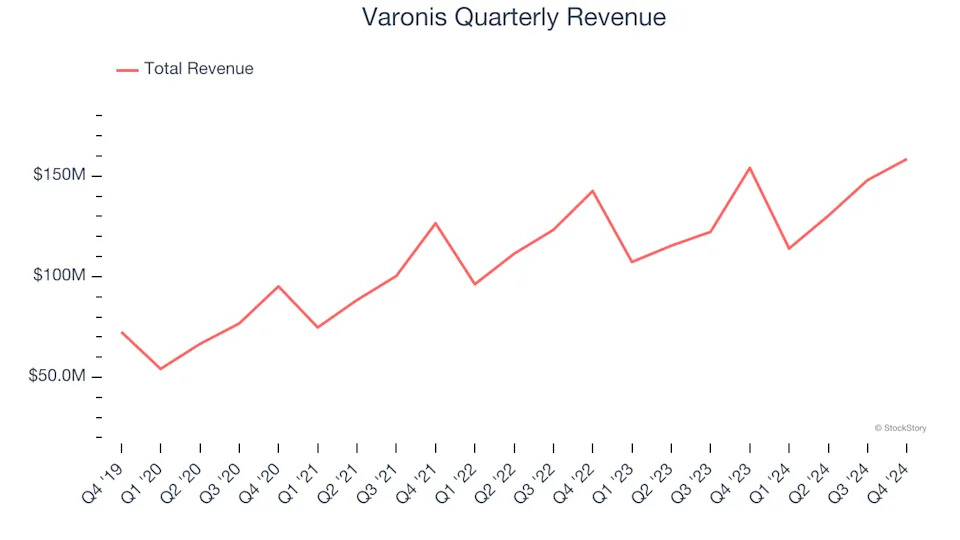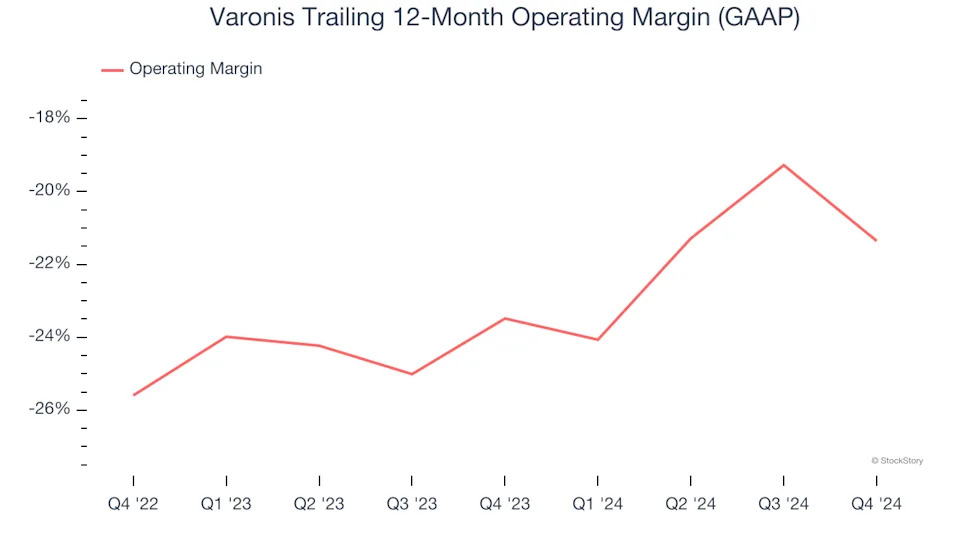
3 Reasons to Avoid VRNS and 1 Stock to Buy Instead

What a brutal six months it’s been for Varonis. The stock has dropped 25.4% and now trades at $41.11, rattling many shareholders. This was partly driven by its softer quarterly results and may have investors wondering how to approach the situation.
Is now the time to buy Varonis, or should you be careful about including it in your portfolio? Get the full stock story straight from our expert analysts, it’s free .
Even though the stock has become cheaper, we're swiping left on Varonis for now. Here are three reasons why we avoid VRNS and a stock we'd rather own.
Why Is Varonis Not Exciting?
Founded by a duo of former Israeli Defense Forces cyber warfare engineers, Varonis (NASDAQ:VRNS) offers software-as-service that helps customers protect data from cyber threats and gain visibility into how enterprise data is being used.
1. Long-Term Revenue Growth Disappoints
Reviewing a company’s long-term sales performance reveals insights into its quality. Even a bad business can shine for one or two quarters, but a top-tier one grows for years. Over the last three years, Varonis grew its sales at a 12.2% annual rate. Although this growth is acceptable on an absolute basis, it fell short of our standards for the software sector, which enjoys a number of secular tailwinds.

2. Operating Losses Sound the Alarms
Many software businesses adjust their profits for stock-based compensation (SBC), but we prioritize GAAP operating margin because SBC is a real expense used to attract and retain engineering and sales talent. This is one of the best measures of profitability because it shows how much money a company takes home after developing, marketing, and selling its products.
Varonis’s expensive cost structure has contributed to an average operating margin of negative 21.4% over the last year. Unprofitable software companies require extra attention because they spend heaps of money to capture market share. As seen in its historically underwhelming revenue performance, this strategy hasn’t worked well so far, and it’s unclear what would happen if Varonis reeled back its investments. Despite this, Wall Street seems to be optimistic about its growth prospects. We tend to have the same view.

3. High Debt Levels Increase Risk
Debt is a tool that can boost company returns but presents risks if used irresponsibly. As long-term investors, we aim to avoid companies taking excessive advantage of this instrument because it could lead to insolvency.
Varonis’s $743.6 million of debt exceeds the $568.4 million of cash on its balance sheet. Furthermore, its 6× net-debt-to-EBITDA ratio (based on its EBITDA of $27.04 million over the last 12 months) shows the company is overleveraged.